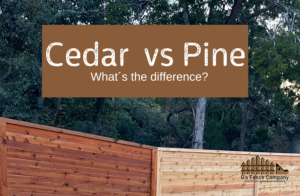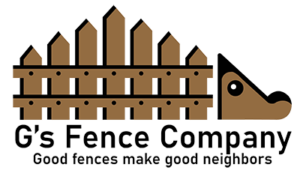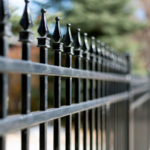When it comes to fencing materials, homeowners are often faced with a multitude of options. Among these, pine and cedar wood stand out as popular choices, each offering its own unique set of benefits and characteristics. For those considering a new fence installation or replacement in San Antonio, understanding the differences between pine and cedar wood can help make an informed decision that suits both style preferences and practical needs.

Picture shows the difference in materials and colors between cedar and pine wood fences
Durability and Longevity:
One of the primary factors to consider when choosing between pine and cedar wood fencing is durability and longevity. In general, cedar wood tends to outperform pine in this aspect. Cedar is naturally resistant to rot, decay, and insect damage, making it a preferred choice for outdoor applications like fencing. Its properties allow it to withstand the harsh Texas climate, including high humidity and temperature fluctuations. On the other hand, while pine can be treated to improve its durability, it typically requires more maintenance over time to combat issues like rot and insect infestation.
Appearance and Aesthetic Appeal:
Another important consideration for homeowners is the appearance and aesthetic appeal of the fencing material. Cedar wood is renowned for its natural beauty, featuring a rich, warm tone and distinct grain patterns that add character to any outdoor space. Over time, cedar weathers gracefully, developing a charming patina that enhances its visual appeal. Pine, while offering a more affordable option, may lack the same level of visual appeal as cedar. However, with proper staining or painting, pine fences can still complement a variety of architectural styles and landscaping designs.
Maintenance Requirements:
Maintaining a fence is essential for preserving its appearance and structural integrity over time. Cedar wood, with its natural resistance to decay and insects, requires less maintenance compared to pine. A simple annual inspection and occasional cleaning are usually sufficient to keep cedar fencing looking its best. In contrast, pine may need more frequent maintenance, including regular inspections, resealing, and potentially, insect treatments to prevent issues such as wood rot and termite damage.
Cost Considerations:
Cost is often a significant factor for homeowners when selecting fencing materials. Pine wood is typically more affordable than cedar, making it an attractive option for budget-conscious individuals. However, it’s essential to consider the long-term costs associated with maintenance and repairs. While cedar may have a higher upfront cost, its durability and minimal maintenance requirements can result in savings over time, making it a cost-effective investment in the long run.
Environmental Impact:
For eco-conscious homeowners, the environmental impact of fencing materials is an important consideration. Cedar wood is a sustainable choice, as it is renewable and biodegradable. Cedar trees grow relatively quickly, making them a renewable resource that can be harvested responsibly. Additionally, cedar’s natural resistance to decay means it often requires fewer chemical treatments compared to pine, reducing its environmental footprint.
In the debate between pine and cedar wood fencing, both materials have their own distinct advantages and considerations. While cedar offers superior durability, aesthetic appeal, and minimal maintenance requirements, pine presents a more budget-friendly option for those looking to save on upfront costs. Ultimately, the decision comes down to individual preferences, budget constraints, and long-term goals for the fence. By weighing the differences outlined above, homeowners in San Antonio can make an informed choice that enhances the beauty and functionality of their outdoor spaces for years to come.
For more information on Professional Fencing call G’s Fence at (210) 888-1498 !




